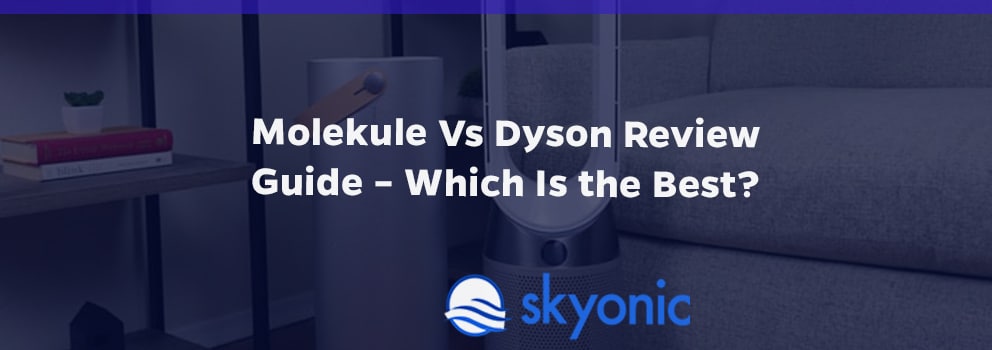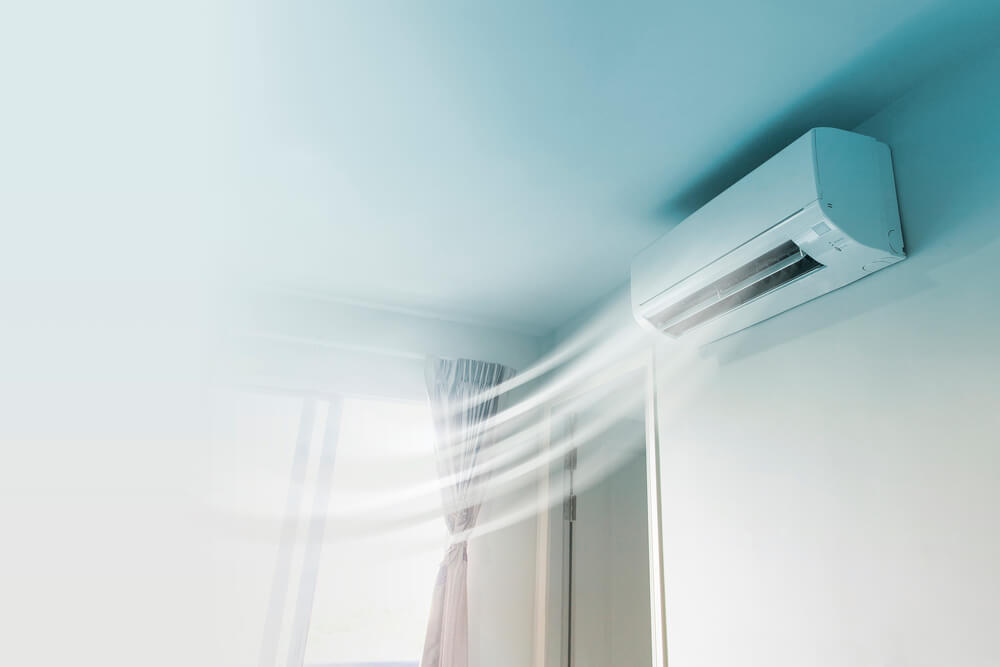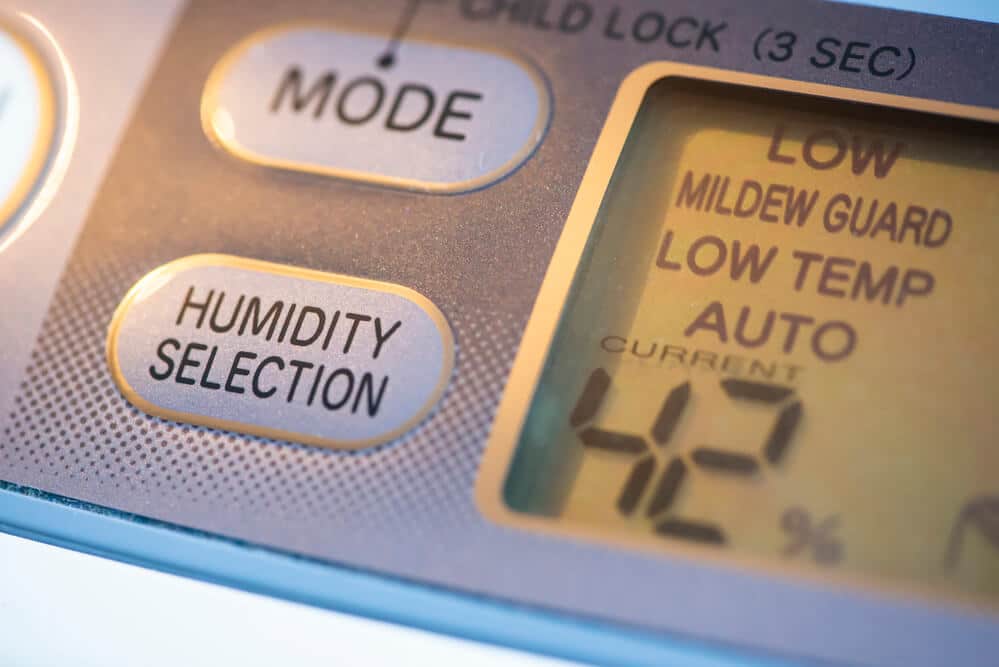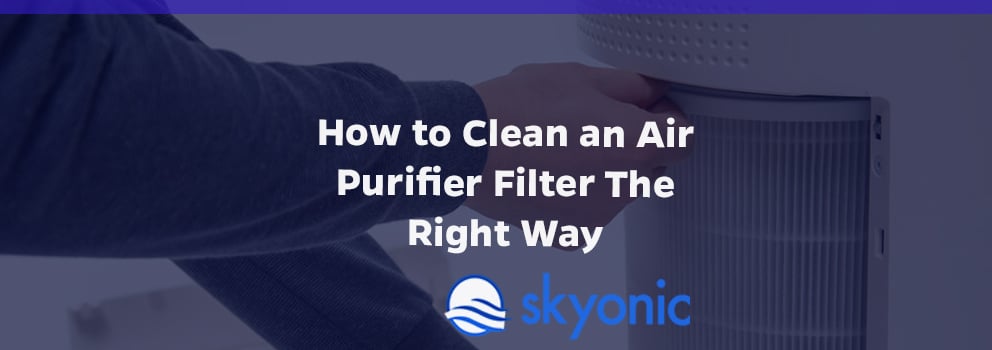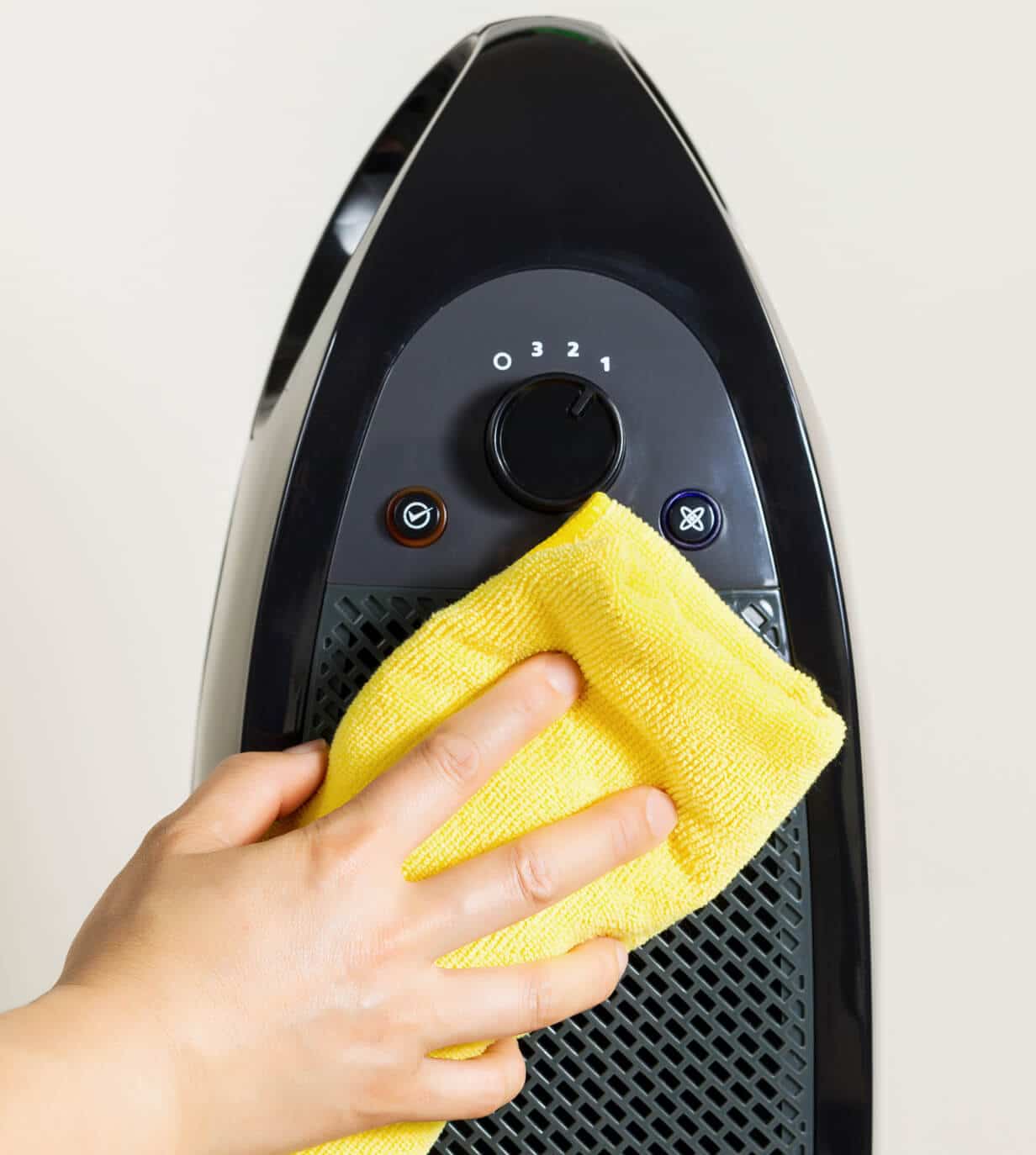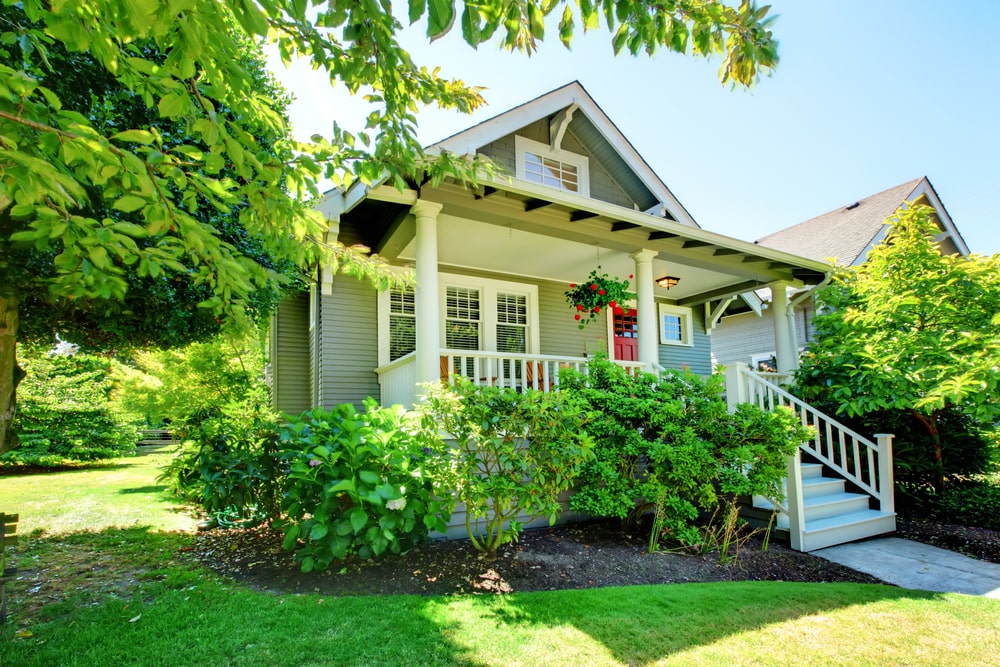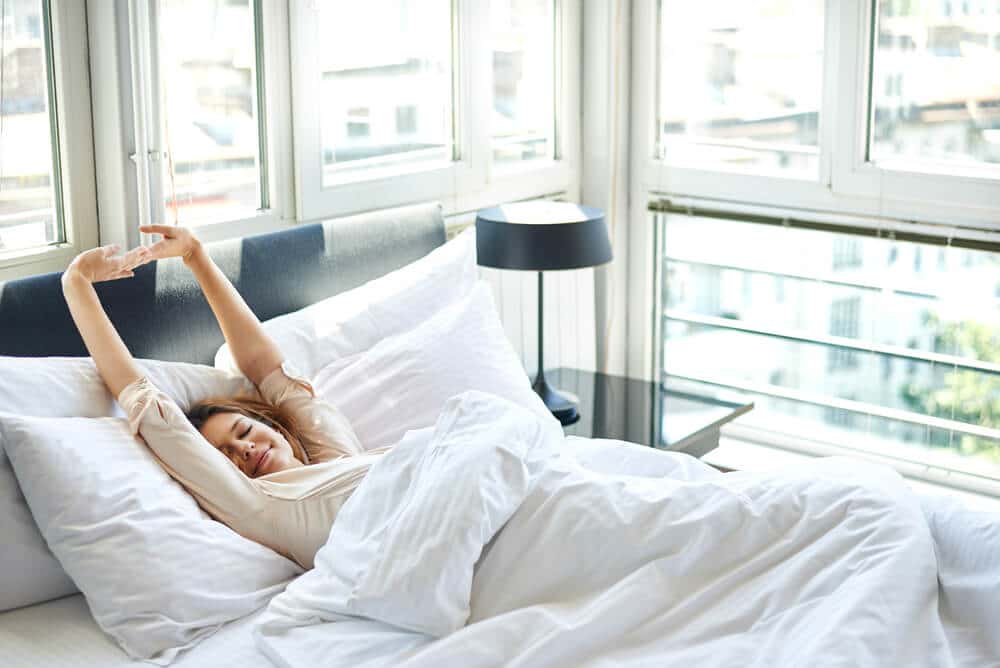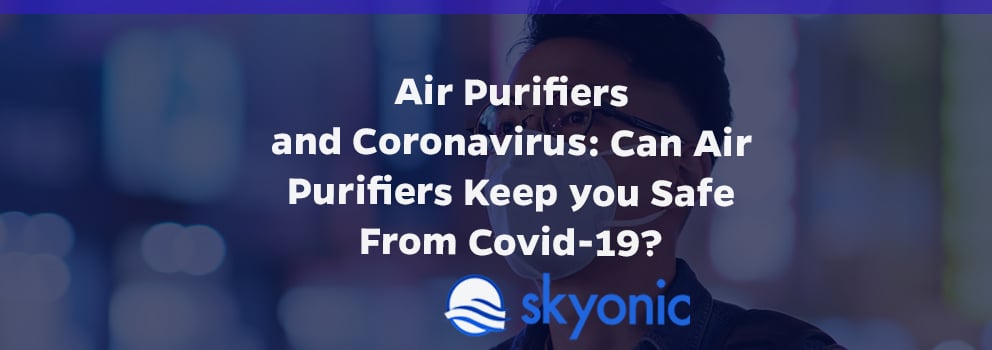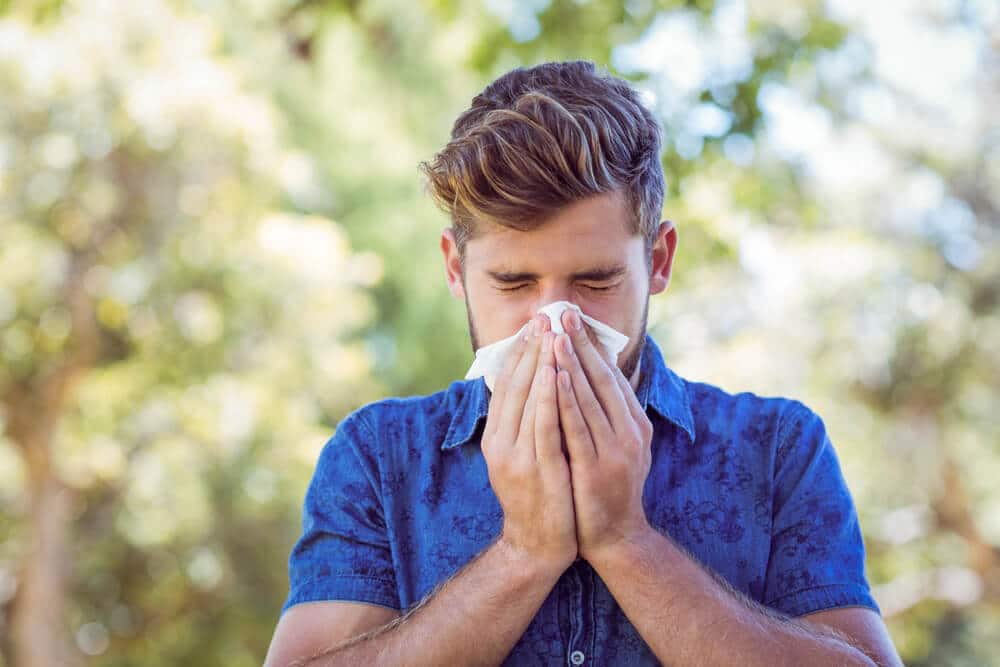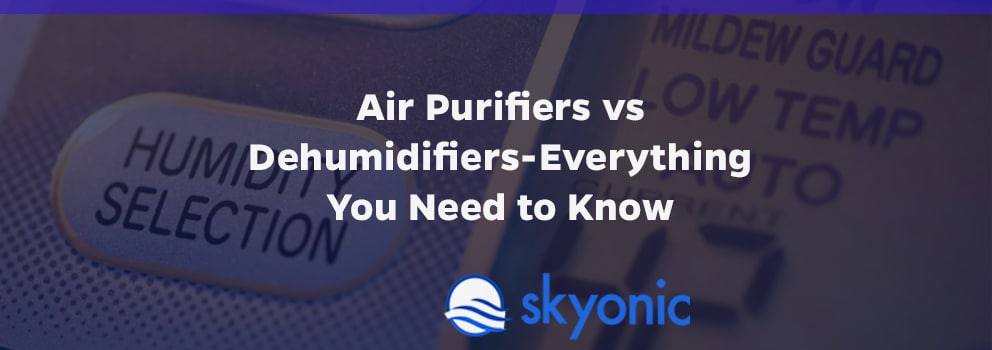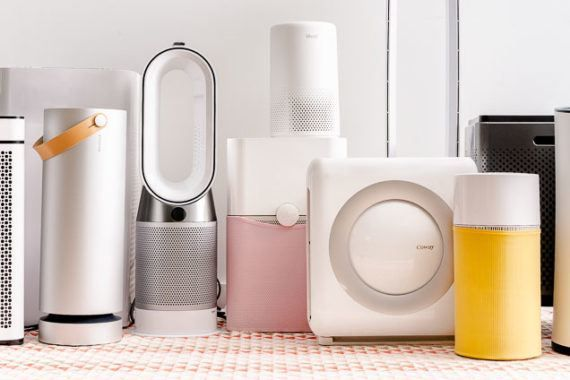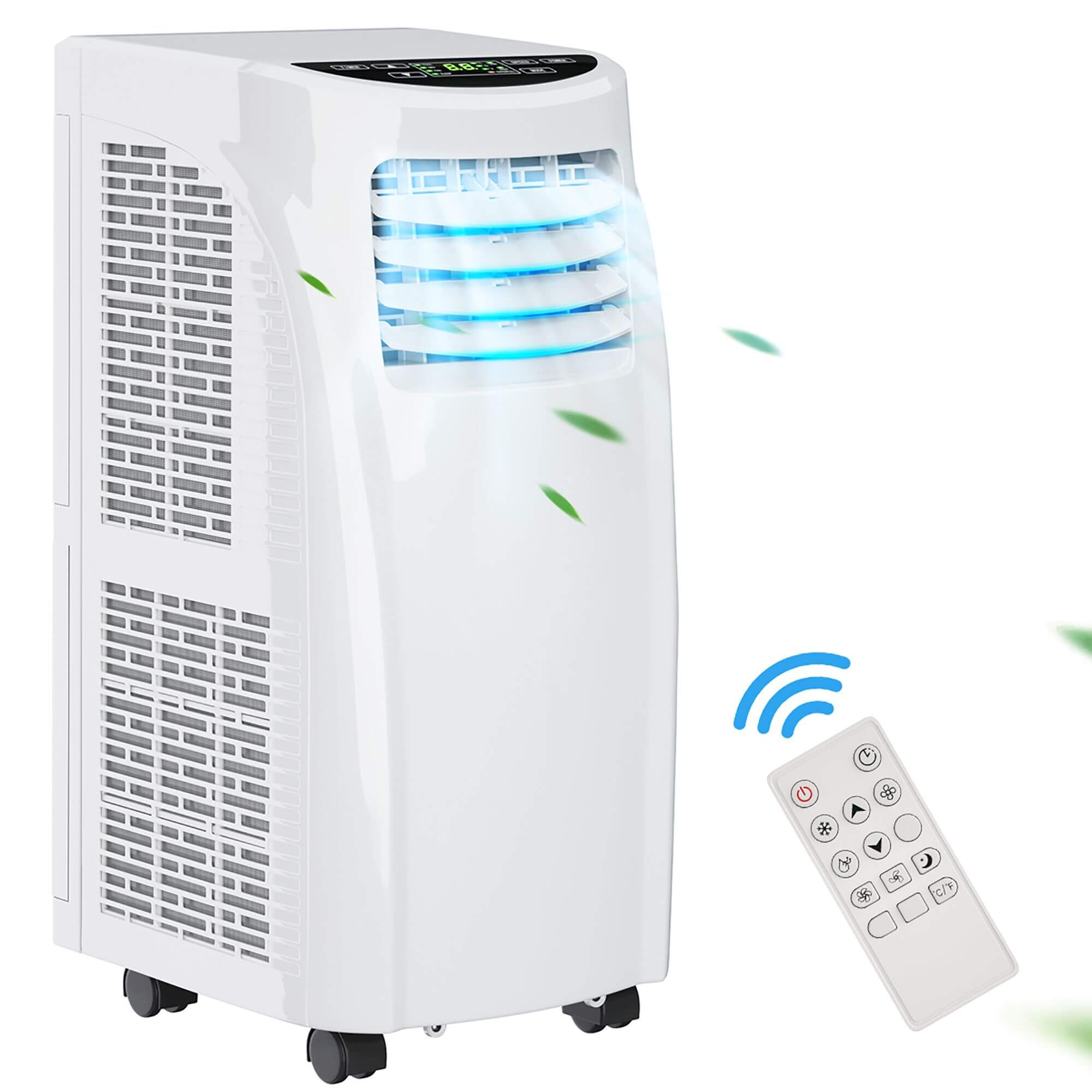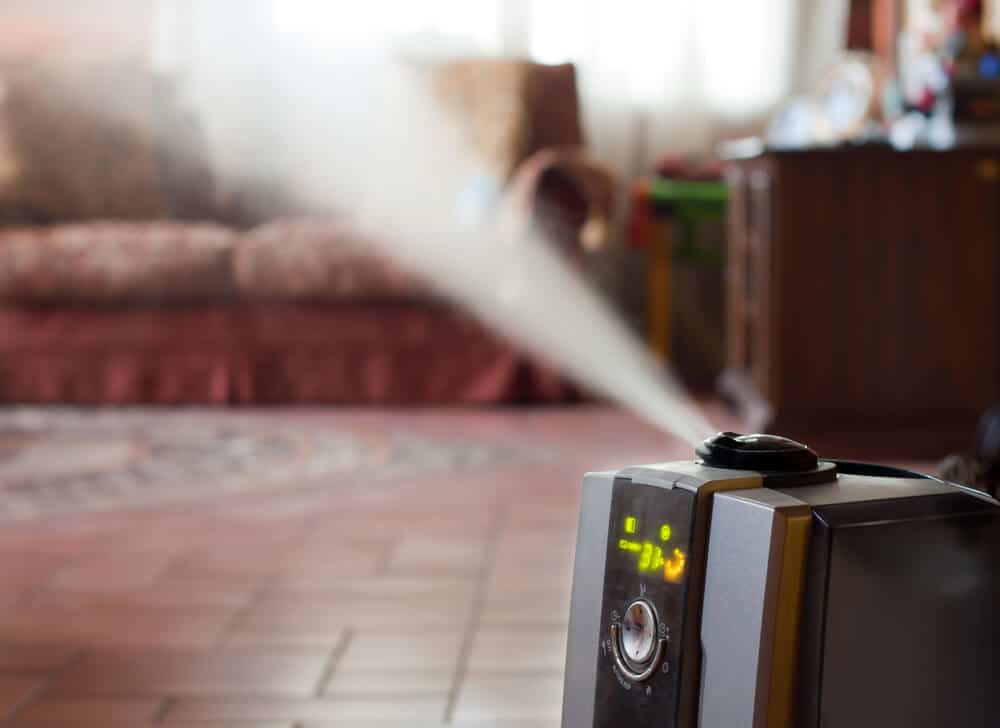Are you expecting a baby or are you already raising one? Are you trying to raise it in a healthy living environment? If the answer to those questions is yes, please continue on reading as in this guide we will familiarise you with the importance of clean air for your baby, what benefits it has for your baby, and things to consider before investing in an air purifier.
After that, considering your individual circumstances, requirements, and expectations, you will be able to find out more about eight different purifiers that will make your home a better and healthier living place for your newborn.
Why are babies vulnerable to air pollutants?
Before we get deeper into the topic of air purifiers and their effects on your baby, let’s talk about why babies are so vulnerable to bad air quality and air pollution.
Having some sort of knowledge will not only help you decide which air purifier is best for your baby but will also make you appreciate the importance of fresh air.
So, here are some of the reasons why babies are most vulnerable to poor quality of air.
- Babies are born with a weak immune system and have underdeveloped defense mechanisms to pretty much everything that most healthy adults are immune to.
- The early years of an infant are the most important for the healthy development of their immune and respiratory system. Therefore, early exposure to poor air quality can cause lifelong damage to their overall and respiratory health.
- As young babies are still unable to walk, they often crawl on the floor. In most homes, the floor contains the most amount of harmful particles especially if you have a carpet as your flooring option.
Benefits of an air purifier for the baby
Your newborn can greatly benefit from an air purifier. One of the most important benefits is that during its early development years, breathing fresh and quality air can have a fundamental impact on its overall health for a lifetime.
By bringing a quality filtration system into your baby’s nursery, you will be sure that your baby isn’t inhaling any harmful pollutants such as dust particles, mold spores, cigarette smoke, viruses, bacteria, and many others that can be of a potential threat to its fragile immune and respiratory system.
Another benefit of adding a filtration system to your baby’s room is that your infant will be at a lower risk of developing allergy symptoms and respiratory conditions such as asthma.

Things to consider before buying an air purifier
Before investing your hard-earned money into a baby air purifier for your home or baby nursery room, there are certain things that you should consider.
Before we get into the individual specifications and functional abilities of each of the eight air purifiers, think about your requirements and expectations. In other words, what do you want from the air purifier?
To help you out, below you will find three questions that will help your decision-making process when it comes down to picking the ideal baby air purifier.
Do you live on a busy road with a lot of traffic or next to a large factory?
If you live on a busy street or next to a factory that produces a lot of air emissions, the quality of air in the area is likely not the best. Bad air quality is known to have a significant long-term impact on our respiratory systems, and can especially affect children and babies whose immune systems aren’t fully developed. In that case, you should consider purchasing an air purifier that has the highest percentage of efficiency in picking up harmful airborne particles and odors.
Do you own pets?
It is estimated that sixty-seven percent of U.S households own a pet. Perhaps if the only pet that you own is fish then you don’t need an air purifier, however, the large majority of people own dogs, cats, and other furry friends that shed around plenty of hair that can cause your newborn to have an allergic reaction. If you don’t want to make the hard decision of removing your pet from the house where your child is being raised, you can easily pick up an air purifier like the Winix HR900 which is made especially for homeowners that are raising children that also have pets.
How about the location that you reside in?
Seasonal allergies are definitely not uncommon. In fact, roughly 50 million U.S citizens suffer from various allergies every year. So, if you live in a rural area, your baby is likely to be affected or even develop symptoms of asthma. In that case, you should consider investing in an air purifier that is specifically designed against allergens and other such particles that can affect your baby’s wellbeing.
After having your requirements and expectations in place, you can now start informing yourself about the different air purifiers on our list and find out the one that makes the most sense for your needs.
The Best Air Purifiers for Babies
Winix HR900
Do you own pets like dogs and cats that shed a lot of hair all over the house? Are you worried about your baby’s pet allergies and how they could affect your child? In that case, the Winix HR900 Ultimate air purifier is the perfect solution for your household to ensure that your newborn is raised in a healthy environment.
Design Features
The Winix HR900 comes only in the color white, has dimensions of 16.30 x 9.60 x 23.60 inches, and weights at 18.70 pounds. The unit has a relatively modern and flat/thin design with the filter being in the forefront covered by a visually appealing punctured cover.
Functionality
With the Smart Sensors and the high-tech system of the HR900, the air purifier effectively captures and processes 99.97% household odors, pet hair, and pet dander as well as other allergens that may come from the outside with size larger than 0.3 microns.
This particular unit has a unique, 5-stage set of filtration process which involves:
- Ultimate Pet Pre-Filter which acts as the first line of defense against pet hair, dander, and the largest particles.
- Washable Fine Mesh Pre Filter: Designed to catch larger airborne particles found indoors.
- Advanced Odor Control Carbon Filter: Filters through household odors coming from cooking, smoke, and pets.
- True HEPA Filter: Responsible for capturing 99.97% of the smallest particles including pollen, mold spores, dust, and microbes.
- Advanced PlasmaWave Technology: Breaks down elements to a molecular level.
Advantages of the Winix HP900
- Perfect solution if you have a pet and suffer from pet allergies.
- The HEPA air purifier catches out 99.97% of airborne pollutants as small as 0.3 microns.
- 300 square feet of operational ability.
- Washable Advanced Odour Control (AOCTM) carbon filter that catches pet, smoke, kitchen, and other household odor.
- Relatively inexpensive to purchase and maintain.
Disadvantages of the Winix HP900
- Unable to catch potentially harmful airborne illnesses and diseases smaller than 0.3 microns.
- It is only available in the color white.
So, if you are on the lookout for a purifier that’s designed for those with a furry friend at home, the Winix HP900 is the air purifier that you need.
Honeywell HFD320 AirGenius 5
Honeywell’s HFD320 AirGenius 5 model is another great air purifier for infants and babies. With a unique and high-end 2-stage filtration system that captures 99.9% of all air particles, this unit is one of the most effective air purifiers on the market today within its price bracket.
Design Features
The smooth black exterior that this unit hosts is definitely one of its unique selling points. It is a popular choice amongst homeowners with a newborn not just because of its functional capabilities which we will discuss below but its visual appeal and flexible design to fit within a range of home settings. At just 9.9” x 9.7x x 26.8”, it can be placed pretty much anywhere within the house and better the overall indoor air quality.
Functionality
This particular Honeywell model offers 5 different levels of operation to suit your needs. If you require extreme efficiency because you reside on a busy and air polluted street, there is an air purification mode just for that. On the other hand, if you want to ensure peace and quiet for your newborn without a lot of white noise while the indoor air is purified during the night, the sleep mode is ideal for that. Additionally, the unit has an integrated smart touch screen where you can change the air filtration and speed settings.
Advantages of the HFD320 AirGenius 5
- Successfully removes 99.9% of dust particles, allergens, germs, and VOCs that can affect your baby’s wellbeing.
- The slim tower designs allow for it to be placed pretty much anywhere within your home.
- The HFD320 AirGenius 5 model features 5 different operational levels that change the quality air output and fan speed. Some of which are extremely quiet and are perfect for air purification during the night.
- Easy elimination of heavy odors due to the Intense Field Dielectric (ifD) filter and activated carbon filter.
- An easy to use smart touch screen. If you are struggling with using your air purifier, be sure to check out our guide on using your new air purifier.
Disadvantages of HFD320 AirGenius 5
- Unable to remove potentially health-threatening particles and airborne disease smaller than 0.3 microns.
- The HFD320 AirGenius 5 model is only available in the color black.
Coway Airmega 400
If you are looking for an air purifier suitable for large rooms or larger homes, with its 1,560 square feet effective air purification range, the Airmega 400 model by Coway is the perfect option for your family home. To date, it is claimed to be the best middle-range full house air purifier on the market.
Design Features
The design of this model is relatively simple yet very modern, making it ideal for a range of different home settings. In shape, it has an almost square body that is surprisingly very visually appealing which is balanced across four short, modern-looking legs.
Functionality
The functional capacity of the Airmega 400 is also world-class. With the dual filter, the air quality is impeccable, making it a great air purification solution if you live in an air-polluted area and desire a higher output of quality air.
Additionally, the pre-filter can trap several larger particles like dust, hair, and fur. Moreover, the smart features can remove up to 99.9% of all airborne particles, making your home a healthy living environment for your baby regardless of your location.
Advantages
- A single unit can comfortably take care of the air quality within your home.
- Latest mobile app and Wi-Fi remote control features.
- Flawless design and great quality.
- Auto mode system and air quality display indicator.
Disadvantages
- It only comes in the colors of black and white.
- Maintenance costs can be quite high especially if you are regularly making use of the air purifier.
GermGuardian AC5250PT
GermGuardian AC5250PT is one of the most successful products of the guardian technology. If you are running on a particularly lower budget but still desire high-quality indoor air filtration of up to 99.97% then this unit is perfect for your home.
Design
The AC5250PT unit by GermGuardian hosts a rather slim but tall design, making it a great option for homes that do not have much room but still desire great quality of indoor air. At the top of the unit, you will find the control panel for the air purifier where you can change between the different modes and find out when it’s time to replace the filters.
Functionality
The activated carbon pre-filter, authentic HEPA filtration technology, and the UV light treatment make this unit one of the most efficient in air filtration on the market. Besides that, the unit can operate in three different modes to suit your baby’s exact needs around the clock with minimal disturbance.
Perhaps the most important aspect is the UV light technology which works in combination with titanium dioxide. This can eliminate over 99.97% of all airborne bacteria, germs, spores, and viruses while the charcoal filter emoves even the heaviest of odors.
Advantages
- Hosts an in-built handle for easier movement around the home.
- Relatively quieter than some of the air purifiers on this list.
- In-built filter replacement timer.
- A great addition to a home with smokers and heavy odors.
Disadvantages
- This particular unit will find it difficult to cover the air purification needs of an entire home/room that is larger than 180 square feet.
Levoit Core 300:
If you are on the lookout for a small, affordable, and efficient air purifier for your baby’s room, the Levoit Core 300 is the perfect unit that can provide you with everything you need..
Design
The Core 300 model comes in a two-color range of either black or white. The bottom part of the unit holds the H13 Ture HEPA air filter, the ultra-fine Pre-filter, and an activated carbon filter. At the top end of the unit, you will find the air vents which are sealed in a smooth white or black color. In shape, at just 8.7” x 8.7” x 14.2”, it is very smooth and holds a very cylinder-like look.
Functionality
The Core 300 design is undoubtedly one of the best units for its size and price range on the market. The H13 Ture HEPA filter, ultra-fine Pre-filter, and the activated carbon filter work together to eliminate and dispose of 99.97% of allergens like dust, pet hair, and other large particles. Additionally, it is ideal if your home is affected by cooking, pet, or furniture odors.
Additionally, on top of the unit, between the air vents, you will find a smooth and very user-friendly control panel.
Advantages
- At just 8.78 pounds, it is relatively lightweight and easy to move around the home.
- Very small and compact, which makes it ideal for smaller homes.
- 2 years warranty.
- A great addition if you own a pet that sheds a lot of hair and leaves unpleasant odors.
- Can comfortably filter the air in just 24 minutes in an area with a room size that is up to 40 square meters, making it a great choice for a baby’s room.
Disadvantages
- Unable to capture airborne diseases and other harmful particles that are smaller than 0.3 microns.
- Not suitable for larger homes
Dyson Pure Cool DP04
Dyson are known for their innovation in the home cleaning space and their high-end air purifiers. The DP04 has become a market leader for no other reason than being great at air purification. With HEPA filtration and four different modes of operation, the DP04 is one of the best air purifiers for baby populated homes and nursery rooms.
Design
The unique, compact, and modern design in light grey of the DP04 provides for a fully functional cooling air purifier. The DP04 is the smallest of air purifiers designed by Dyson. It is just 27.2 inches in height and 10.18 pounds in weight.
The air circulation vents also follow the bladeless Dyson design style, however, in the case of the DP04 model, it is in the shape of a ring.
Functionality
The functional abilities of the Dyson DP04 are far greater than most of its competition in the same price bracket. The unit is able to both purify the air with extreme efficiency of up to 99.97% and simply be used as a fan. Additionally, the unit has three different operation modes to suit your exact needs, regardless of whether it’s day or night.
The DP04 also makes use of a large HEPA filter which works in line with an activated carbon filter to remove big particles and elements as small as 0.3 microns. Additionally, it is capable of completely eradicating any heavy indoor odors from cooking, pets, or furniture.
Advantages of the Dyson Pure Cool DP04
- Relatively lightweight as compared to other air purifiers at just 10.18 pounds.
- Clean Air Delivery Rate (CADR) certified.
- Option for 2-directional airflow.
- It comes with remote control.
- 350-degree oscillation.
- Wi-Fi-enabled and fully functional with Alexa & Siri.
- Dyson air purifiers use the HEPA filters which are very useful when it comes to eliminating contaminants and allergens in the area, ensuring a safe environment for your baby.
Disadvantages
- HEPA filtration isn’t able to capture harmful particles and airborne diseases that are smaller than 0.3 microns.
- Despite the great and stable base of the DP04, the design of this model makes the air purifier more prone to damage from accidents or during transportation.
Blueair Blue Pure
Do you find most air purifiers to be too noisy when working at higher efficiency? If you want your baby to be living in a healthy environment with minimal noise coming from the air purifier, the Blueair Blue Pure is an option that you can’t overlook.
Design
This particular model comes in six exciting colors to pick from with the option to leave on the white mesh frame if you desire to achieve a simpler and more modern look. At just 20.6 x 9.8 x 9.7 inches, this cylinder-looking unit is ideal even for the smallest of rooms as it doesn’t take up a lot of space.
Functionality
With the help of the 3-step filtration technology + activated carbon filter, this compact air purifier can clean up the air in your home every 12 minutes or about 5 times every hour in rooms that are up to 185 square feet. Additionally, the Blueair’s HEPASilent filtration system can easily remove airborne particles like pollen, dust pet dander as well as a wide range of odors.
Advantages of Blueair Blue Pure
- 3-stage air purification system.
- Ideal for indoor air cleaning and removal of allergens, odors, smoke, mold, dust, germs, and other harmful particles.
- Very quiet with minimal noise which can be as little as 17 decibels as compared to other air purifiers.
- Named one of the best on the market despite its relatively low price.
- It comes in 6 different colors.
Disadvantages
- It can cover up to just 185 square feet, making it unsuitable if you want to purify the air in your entire home at once.
GermGuardian AC4300BPTCA
Last by not least, on this list of best air purifiers we have the AC4300BPTCA by GermGuardian. Like its counterpart, the AC5250PT, this model too is the perfect option for being a nursery air purifier and creating Amazon-like clean air.
Design
The AC4300BPTCA model has a relatively bulky look as compared to some of the units on this list, which can make it less favorable for someone whose baby room isn’t so big. This model only comes in the color of black, however, the overall design is very visually appealing and can be suitable for a wide range of home and room designs.
Functionality
With the use of HEPA filtration and Pet Pure treatment filter, this air purifier is ideal for parents with pets. The HEPA filter, like most of the units on this list can comfortably capture up to 99.97% of allergens including pet dander, dust mites, and pollen. On the other hand, the Pet Pure filter is an antimicrobial agent that is added to the filter that is extra effective against mold and other odor-causing bacteria that comes from your pets.
Additionally, the unit is energy star certified, making it ideal if you live in a relatively polluted area and need the unit to run constantly without it affecting your energy bills.
Advantages
- Filter replacement indicator.
- A great option for air purification if you own pets and live in an area with poor air quality or are exposed to seasonal allergies caused by pollen and other allergens.
- A great choice if you are looking for an odor remover unit that can take care of odor caused by smoke, cooking, furniture, pets, and more.
Disadvantages
- Relatively large design, making it less suitable for smaller baby rooms.
- Best suited for rooms of up to just 153 square feet.
- Limited 2-year warranty.
What Do We Recommend For Being The Best Air Purifier For Babies?
With hundreds of air purifiers on the market, one of the hardest decisions you will need to make is picking the best air purifier for a baby room. Now, the question, what do we recommend? While we deeply desire to be able to provide you with our favorite on the list, the answer in this case is quite subjective.
Remember the questions that we asked you to consider at the start of this article? With that in mind, you probably have selected one or two air purifiers from this list of eight that best suits your needs. In case you are split between two or more purifiers, consider the price against functional abilities, whether you find the design to be suitable for your home space and decor, how difficult filter change is, and the noise level that the unit produces.
Last but not least, the most important of all, since you are purchasing it for your newborn, we definitely don’t recommend you purchase something that doesn’t cover all of your requirements. This can compromise your newborn’s overall lifelong health.


